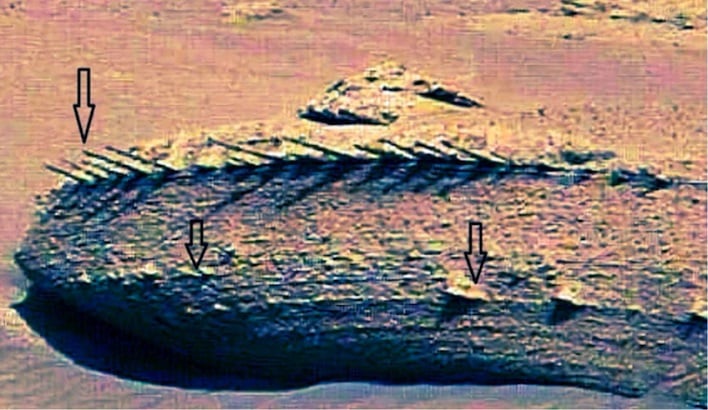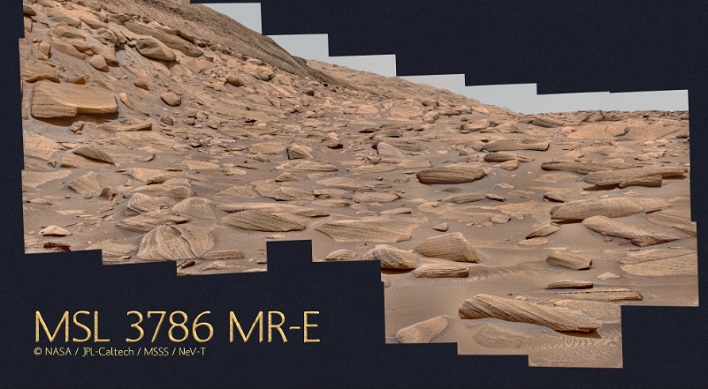Did An Alien Spaceship Crash On Mars? NASA Scientist Suggests It’s Possible

Back in April of this year, an image captured on April Fool's Day by Curiosity had more than a few people wondering what they were looking at. While one saw 'the back of a fossilized Martian dragon', others determined it might be the fossilized remains of an ancient creature that once roamed the surface of Mars. At that time, scientists with NASA said in an interview that it was more likely that odd-shaped rocks originated when "liquid water seeped through the cracks in the rock, bringing minerals with them." Now, however, a new paper says the possibility of the markings coming from an alien spacecraft cannot be ruled out completely.
When the photograph began circulating earlier this year, Dr. Nathalie Cabrol, an astrobiologist with NASA's Ames Research Center and Search for Extraterrestrial Intelligence (SETI), remarked that it was "the most bizarre rock" she had seen in her 20 years of studying Mars.
The paper, published in the Journal of Astrobiology, states, "These features have resulted in considerable speculation as to their origin with both biogenic and geological explanations being suggested as well as the possibility they may represent debris from a saucer-shaped extraterrestrial space craft."
The group of researchers believed it was unlikely that the odd markings could have come from any of NASA's orbiters or other terrestrial craft that crashed into Gale Crater. However, they determined that the evidence given could not completely rule out the possibility that the markings originated from "a fragment from an extraterrestrial or terrestrial space craft."
One of the reasons given as to why this possibility could not be "discounted with absolute certainty" is because of other photographic evidence from the Gale Crater. In one photo, it includes what appears to be "wheels, an axle and a cratered debris field." The team added that it did not believe the spikes were the result of "lightning or electromagnetism in the early life of Mars" either.
The most likely explanation that the paper suggests, and does not include alien spacecraft, is that it is a type of sand concretion, known as a 'sand spike', that formed in the presence of water, sand, and seismic activity. The team concluded that the protrusions were a "consequence of weathering" and other factors, with "the most likely being water, seismic activity, and the activities of microorganisms."


